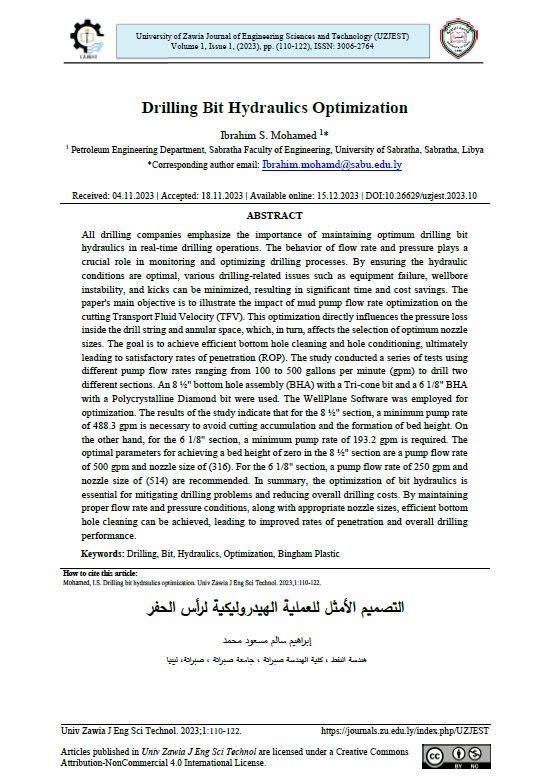Drilling Bit Hydraulics Optimization
Main Article Content
Abstract
Maintaining an optimum drilling bit hydraulics is an essential element of real-time drilling monitoring that is influenced by fluid flow and pressure response. Issues such as equipment failures, kicks and wellbore instability create a significant source of drilling related problems and consequentially increase lost time and associated “red money”. Moreover, the optimum processes to clean and condition the hole in relation to hydraulics have a significant potential in avoiding hidden lost time. The main objective of this paper is to illustrate the influnce of the mud pump flow rate optimization on the cutting Transport Fluid Velocity (TFV). In other words, maintaining optimum pressure loss inside the drill string and in the annular space, which in terns affects the optimum nozzles size, is a key element in bit hydraulics optimization. As a result, an optimum bottom hole cleaning is attained leading to an overall goal of maintaining a satisfying rate of penetration (ROP). A series of pump flow rate are used to optimize the overall hole hydraulics ranges from (100 to 500) gallon per minute (gpm) to drill two different sections using 8 ½" bottom hole assembly, BHA with Tri-cone bit and 6.1/8" BHA with Polycrystalline Diamond bit. The optimization was carried out using the WellPlane Software and the results manifest that, the minimum pump rate to avoid cutting accumulation that leads to form Bed height for 8 ½" section is 488.3 gpm whereas for 6 1/8" section is 193.2 gpm. Furthermore, for 8 ½" section, pump flow rate of 500 gpm and nozzles size of (3*16) are optimum to achieve bed height of zero. However, for 6 1/8" section, pump flow rate of 250 gpm and nozzles size of (5*14) are recommended. To sum up, Bit hydraulics optimization is fatal to avoid most drilling problems and minimize overall drilling cost.

